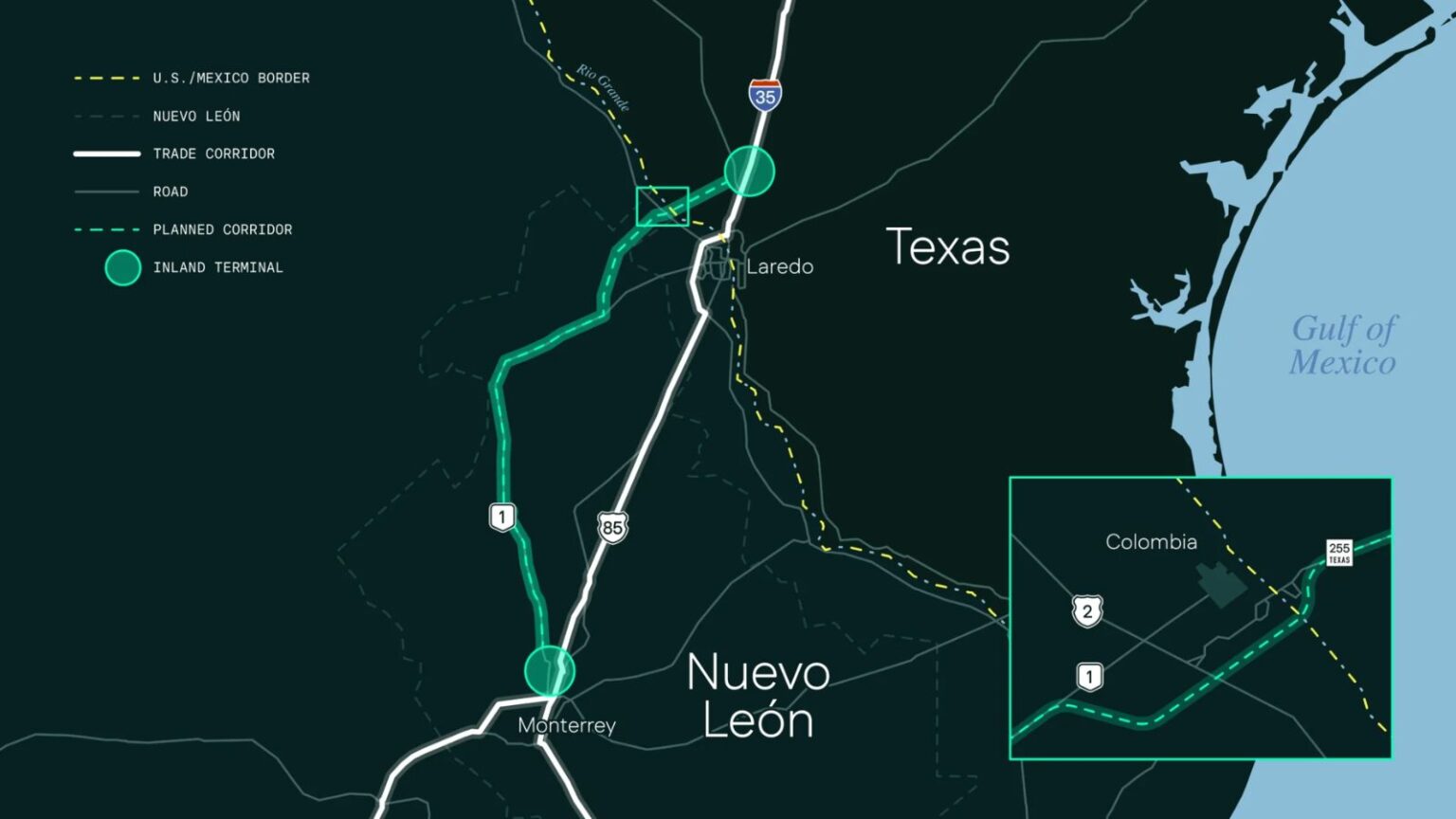A $10 billion infrastructure project will link Texas and Mexico through a 165-mile elevated freight corridor.
The initiative, led by Green Corridors, aims to create a fully electric and autonomous cargo route that reduces highway traffic and supports cross-border transport.
Newsweek contacted Green Corridors via email for comment.
Why It Matters
Laredo, Texas, has some of the busiest land trade crossings in the United States, handling over $339.03 billion in trade in 2024. However, Interstate 35, a major trade route running through Texas, is often congested. The new route could alleviate traffic congestion by providing a dedicated path for freight movement.
What To Know
The project was announced on June 20, following approval from the Trump administration earlier in the month. However, the project is not receiving any government funding and is instead being financed by a consortium of private-sector leaders and infrastructure partners.
The freight corridor will begin in San Antonio, Texas, extend south through the Eagle Ford Shale region, reach the border at Laredo, and connect to Monterrey in Mexico.
The corridor would run on raised tracks for its full length, avoiding intersections with other traffic. The system relies on renewable energy, and automation will be used to manage pod operations along the line.
The use of electric vehicles would also reduce emissions, while improving scheduling and reliability for shipments.
Green Corridors has proposed a system that would enable autonomous electric pods to transport cargo containers without relying on traditional trucks. These pods would operate under automated systems designed to manage traffic flow and power use.
What People Are Saying
Green Corridors CEO Mitch Carlson said: “By separating freight from public traffic, we can significantly reduce transportation costs and solve serious congestion and safety issues.
“Our elevated guideway is a viaduct system that removes tractor trailer and container traffic from the public roadway, eliminating crashes and reducing traffic congestion. At our inland terminals, proprietary, full-automated, mechanized handling systems load and unload freight from trucks to shuttles.”
Carlson also said that the project would enhance border security, a key issue in relations between Texas and Mexico, by curbing “terrorists, human trafficking, and drug smuggling.”
What Happens Next
The company plans to begin environmental reviews and technical assessments later this year. Construction could begin in 2026 if permits and funding are secured. Talks with officials in both countries are underway regarding planning and cooperation.
The project would be among the largest infrastructure efforts in the region involving private sector leadership. If completed, it would add new infrastructure to one of the most active freight corridors in North America.
Read the full article here

